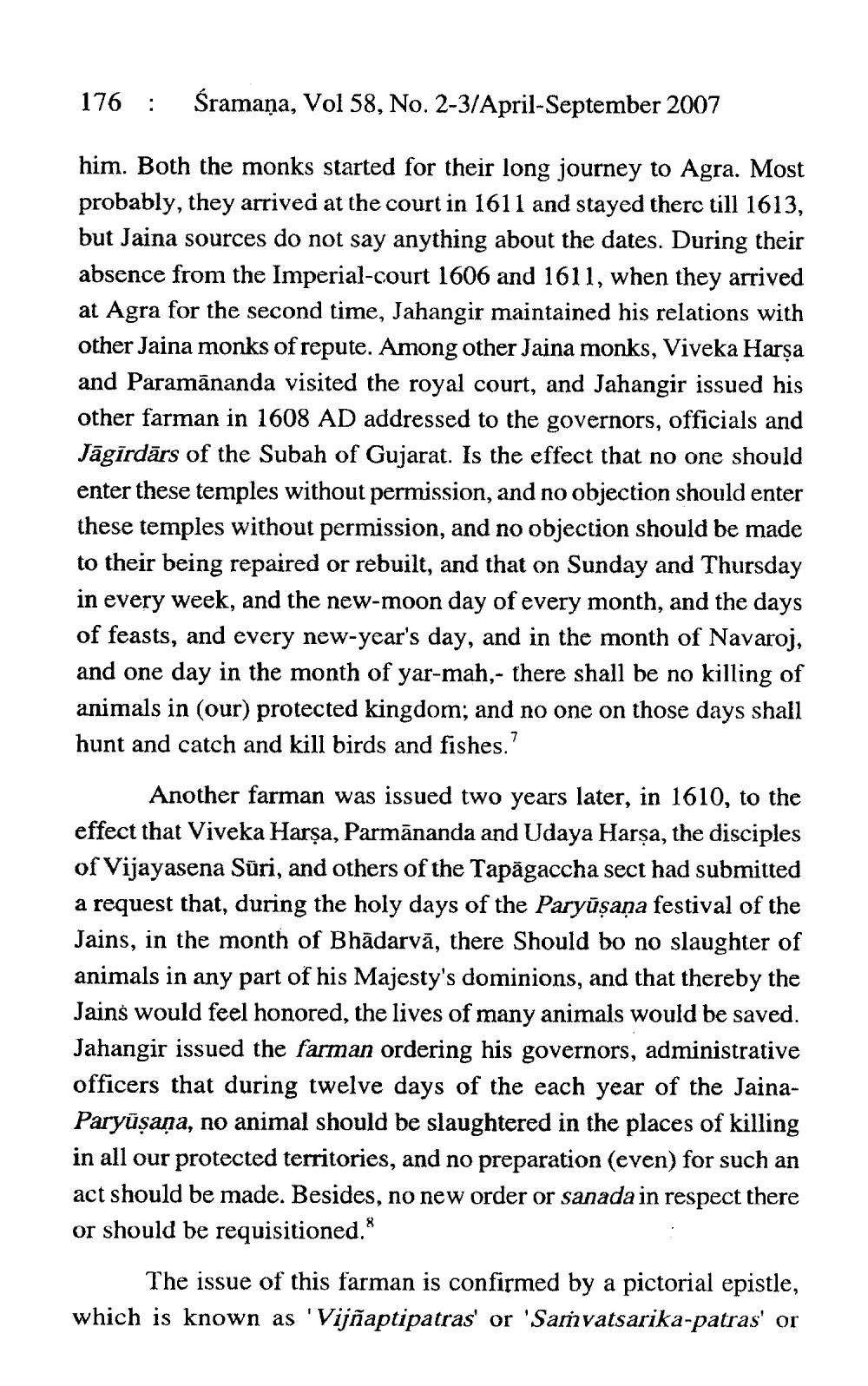________________
Śramana, Vol 58, No. 2-3/April-September 2007
him. Both the monks started for their long journey to Agra. Most probably, they arrived at the court in 1611 and stayed there till 1613, but Jaina sources do not say anything about the dates. During their absence from the Imperial-court 1606 and 1611, when they arrived at Agra for the second time, Jahangir maintained his relations with other Jaina monks of repute. Among other Jaina monks, Viveka Harşa and Paramananda visited the royal court, and Jahangir issued his other farman in 1608 AD addressed to the governors, officials and Jāgirdārs of the Subah of Gujarat. Is the effect that no one should enter these temples without permission, and no objection should enter these temples without permission, and no objection should be made to their being repaired or rebuilt, and that on Sunday and Thursday in every week, and the new-moon day of every month, and the days of feasts, and every new-year's day, and in the month of Navaroj, and one day in the month of yar-mah,- there shall be no killing of animals in (our) protected kingdom; and no one on those days shall hunt and catch and kill birds and fishes."
176 :
Another farman was issued two years later, in 1610, to the effect that Viveka Harṣa, Parmananda and Udaya Harṣa, the disciples of Vijayasena Süri, and others of the Tapagaccha sect had submitted a request that, during the holy days of the Paryuṣaṇa festival of the Jains, in the month of Bhädarvā, there Should bo no slaughter of animals in any part of his Majesty's dominions, and that thereby the Jains would feel honored, the lives of many animals would be saved. Jahangir issued the farman ordering his governors, administrative officers that during twelve days of the each year of the JainaParyūṣaṇa, no animal should be slaughtered in the places of killing in all our protected territories, and no preparation (even) for such an act should be made. Besides, no new order or sanada in respect there or should be requisitioned."
The issue of this farman is confirmed by a pictorial epistle, which is known as 'Vijñaptipatras' or 'Samvatsarika-patras' or




